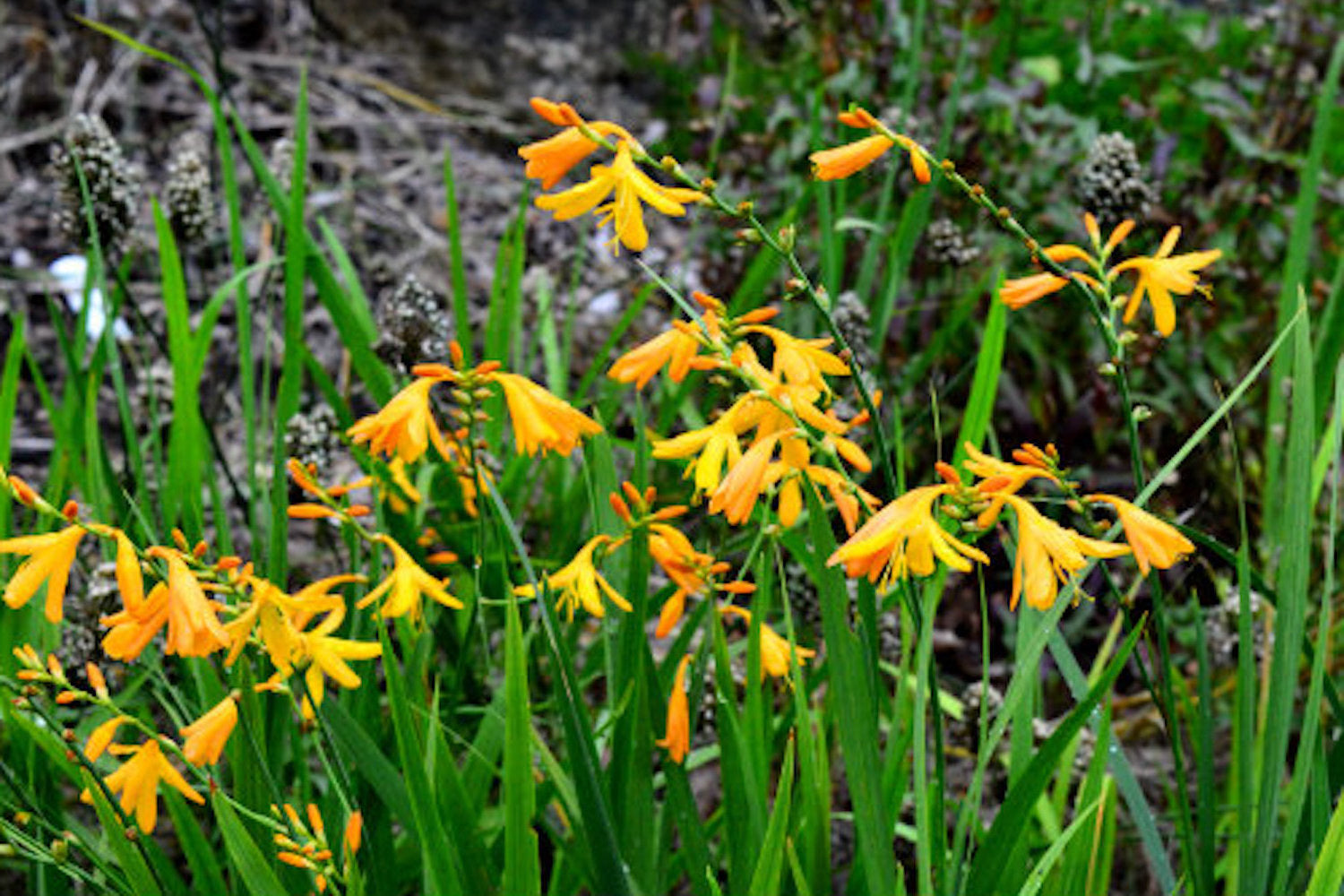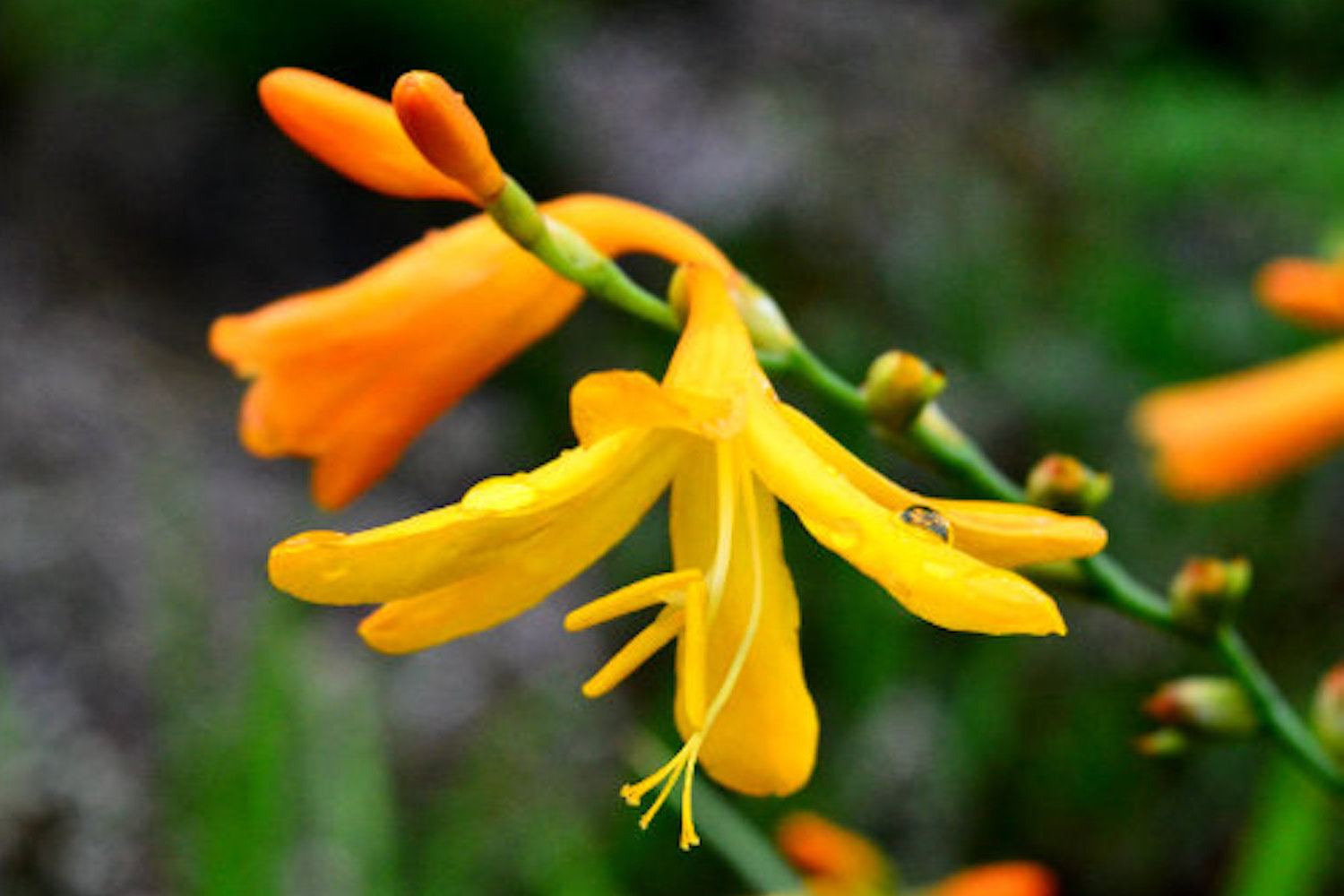Crocosmia x crocosmiiflora (Lemoine) N.e. Br. 'George Davison' Davison
Approx. 0.5 litre pot
About this cultivar:
Crocosmia x crocosmiiflora (Lemoine) N.e. Br. 'George Davison' Davison (RHS name, not mine!) is a hybrid between C. aurea and C. pottsii that was registered in 1985, 1900, or 1910 depending on what you read. George Davison was Head Gardener at Westwick Hall in Norfolk and is generally regarded as the father of Crocosmia breeding in the UK. This cultivar is a large, arched, yellow version that is “highly recommended” by David Fenwick, former holder of the British National Collection. Can be a bit rampant in the right conditions so watch out!
- Position: Full sun, partial shade
- Soil: Almost any soil, grows well in Ballyrobert
- Flowers: July, August, September
- Other features: Grows well in Ballyrobert
- Hardiness: H5 - Hardy in most places throughout the UK even in severe winters (-15 to -10°C), Fully hardy - grows well in Ballyrobert!
- Habit: Clump forming
- Foliage: Deciduous
- Height: 75 - 90 cm (2.5 - 3 ft)
- Spread: 75 - 90 cm (2.5 - 3 ft)
- Time to full growth: 2 to 5 years
- Plant type: Herbaceous Perennial, bulb
- Colour: Green, yellow, orange
- Goes well with: Ilex (Holly), grasses (such Stipa), Lavendula, Anemone, Rudbeckia, Agapanthus, and Aster. If in doubt: front of a border.
About this genus:
Crocosmia is a wonderful genus of 11 species of easy-to-grow, perennial, summer flowering bulbs from Southern Africa. These iris family members (Iridaceae) produce blazing flower stalks in summer from fast-multiplying underground corms (bulb-like structures).
The common name Montbretia commemorates Antoine Francois Ernest Conquebert de Monbret, a botanist who accompanied Napoleon on his Egyptian campaign from 1798-1801. The genus name Crocosmia is derived from the Greek "krokos" (for saffron) and "osme" (for smell) as the dried leaves smell like saffron when crushed. Crocosmia flowers also attract butterflies and more importantly hoverflies...imporant predators of aphids and other garden pests.
Crocosmia species were first hybridized in the 1870's at the Lemoine nursery in France, and over 400 cultivars have been introduced. However many of the fine old cultivars have sadly been lost to history. The cultivars we have at Ballyrobert vary a bit in habit - some, like the aptly named 'Lucifer', can very vigorous and can take over the garden (if that's what you want) others, like the aptly named Lady Hamilton, are well behaved. As for soil and situation, we find they grow anywhere that isn't too extreme - if you have a very devilish spot in your garden, stick 'Lucifer' in there (pun intended).
Crocosmia flowers are often 'hot' colours; deeply saturated with red, orange, and yellow hues. Colour therefore often dominates thinking when considering plant pairings. In our garden at Ballyrobert we have paired them with Ilex (Holly), grasses (such Stipa), Lavendula, Anemone, Rudbeckia, Agapanthus, and Aster; just take a look at our photos for each cultivar. If in doubt stick in the front of a border!




